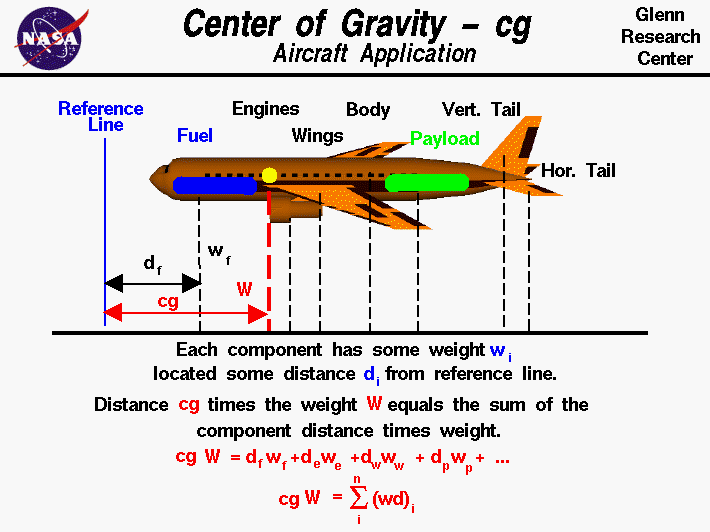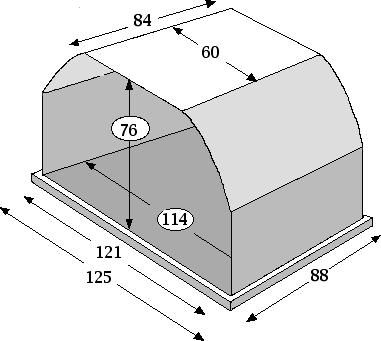|
|
Center
of Gravity Activity
If so instructed by your teacher, print out a worksheet
page for these problems.

The supply company you
work for has just purchased a DC 8-62 cargo transport airplane. You will
find the specifications for the new company "toy" below. The company has
decided to promote you to ground crew supervisor. You are responsible for
loading the DC 8-62 so that the center of gravity of the airplane is maintained
at 75 feet ( 22.9 meters).
- For the first flight,
the cargo airplane is loaded with 2 Igloo cargo shells. The first fiberglass
shell contains 4,550 lbs of cargo and is located 40 feet from the reference
point. The second aluminum shell contains 7,000 lbs of cargo and is
located 110 feet from the reference point. The empty mass (see specifications)
is located 75 feet from the reference point. Calculate the center of
gravity of your aircraft. (HINT: Don't forget to add in
the weight of the Igloo shell to the mass of the cargo.)
- The second flight
is loaded with 2 aluminum Igloo cargo shells each containing 9,590 lbs.
Your ground crew has placed one container at 120 ft. from the reference
point and the other at 90 ft. from the reference point. The empty mass
is still located at 75 ft. Calculate the center of gravity of your aircraft
. (HINT: Don't forget to add in the weight of the Igloo
shell to the mass of the cargo.)
- Did your first
flight meet your required center of gravity specifications? If you answered
no, go to Question 5.
- Did your second
flight meet your required center of gravity specifications? If you answered
no, go to Question 5.
- What correction
would the pilot of the airplane have to make during flight to fly the
airplane as it is loaded? Where would you move your cargo shells to
get the center of gravity to equal the required 75 ft.?

-
Forward
Belly (bulk) - 800 cu. ft.
-
Aft
Belly (bulk) - 815 cu. ft.
-
Main
Cargo Door (A)- 85" high by 140" wide
-
Forward
Belly Door (B) - 36" high by 44" wide
-
Aft
Belly Door (C) - 36" high by 44" wide
-
Payload
maximum - 90,000 lbs.
Empty mass - 136,600 lbs
Main deck cargo volume (containerized) - 6,160 cu. ft.
-
[thirteen
(13) - 88" x 125" containers or pallets]
-
-
-

-
Emery
Worldwide aircraft are units loaded utilizing Type A-3 containers
and pallets. The
-
Igloo
illustrated, is an enclosed fiberglass or aluminum shell, open on
one side and closed
-
after
loading with a fabric cover and straps. Pallets are essentially the
same size as the
-
Igloo,
but without the permanent shell. Freight loaded on pallets is restrained
with nets.
-
-
Inside
dimensions - 121" long, 84" wide, 76" high
-
Pallet
dimensions - 88" x 125"
-
Volume
capacity - 450 cu. ft.
-
Maximum
gross weight - 10,500 lbs.
-
Approximate
tare weights: 410 lbs. - Aluminum shell; 520 lbs. - Fiberglass shell
-
-
|
